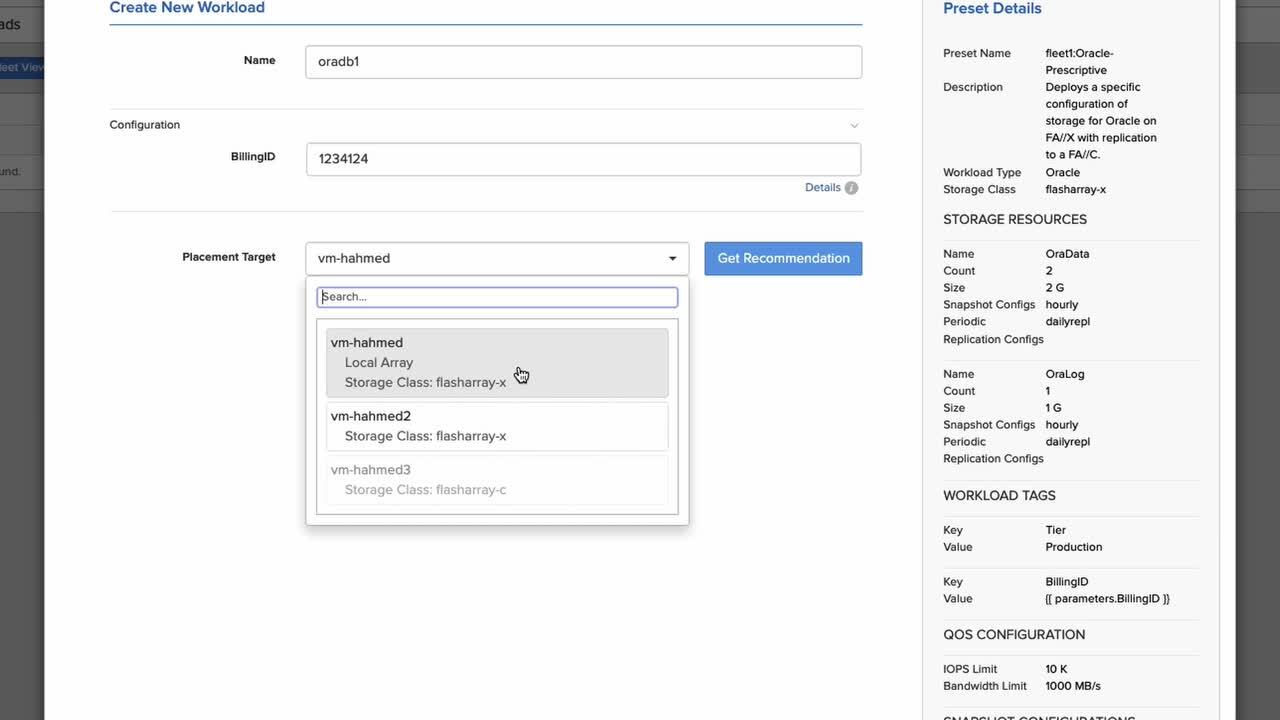01:00:02
Hi, I'm Larry from the Pure Fusion team. One of the challenges with data management today is that systems operate in isolation, creating management silos and preventing
01:00:13
you from having a unified, scalable model for managing data and deploying workloads across the infrastructure. Another problem is that all of these
01:00:22
systems have many individual resources for you to manage. You have to worry about volumes and file systems and buckets and
01:00:29
protection settings and configuring other settings like QoS and replication, rather than focusing on managing workloads and outcomes. Another problem with that situation is
01:00:41
that this leads to people making mistakes. Accidents can happen. They skip steps. This is gonna leave organizations vulnerable to risk like outages,
01:00:51
cyberattacks, inability to recover if you do experience a cyberattack, and overall lost productivity. Pure's solution to this is the Enterprise Data Cloud with Pure Fusion™.
01:01:03
Fusion is an intelligent control plane that lets you focus on outcomes. You define rules and outcomes that you want, and you let Fusion automate
01:01:11
and configure things for you. And what you get is compliance and consistency. Fusion is integrated into Purity and available after a simple Purity upgrade.
01:01:23
There's no separate license or external control plane you need to install or configure. It's fully backwards compatible. It won't break any existing integrations
01:01:32
that you might have built or any third party products that you're using. Fusion also improves and simplifies data management from one to many arrays.
01:01:41
It eliminates risk and enforces proper configuration. Let me show you how this works. In addition to expanding the UI to allow management of fleets of arrays,
01:01:51
Fusion also introduces a new feature called presets. Presets are fully customizable and increase operational efficiency by bundling many individual manual tasks
01:02:01
into a configuration workflow that drives your storage outcomes. In this example, we'll deploy storage for a database workload with multiple volumes,
01:02:10
a snapshot configuration, replication, QoS settings, and customized labels in just a few clicks. All you have to do is select the preset that you want to
01:02:20
configure a workload from. We'll show you all the configurations that Fusion will do for you over on the right. Click Continue. You enter
01:02:36
a name for your workload. Then you can enter a billing ID. A billing ID is simply a customizable label. You can call it whatever you want. You
01:02:48
could call it Department ID or Team Name. You can also add many other customizable labels that will attach to the workload for you when it's provisioned. Then you move on to choosing where to
01:02:59
deploy this workload. This particular preset is restricting the deployment to a FlashArray//X™. And we do that with a thing called a storage class.
01:03:08
You're not allowed to deploy the workload on the wrong kind of array. As you can see at the bottom there, we won't allow this to be deployed on a FlashArray//C™.
01:03:16
But you can also get a placement recommendation and Fusion will help you decide where to deploy this workload. You run the recommendation. Fusion will connect to the Pure1® workload planner.
01:03:29
Get a simple recommendation telling you where to position this workload in the environment. This eliminates the need for you to have to do complex sizing operations before
01:03:38
you can deploy workloads in your environment. Once the array has been selected, you simply click Create Workload, and Fusion will, in the background,
01:03:50
configure all the settings for you and deploy this workload. So you can see here we've got a workload called AuraDB1. If I open that up, I can see that three
01:04:00
volumes have been configured, two data volumes, and a log volume. We've also configured the necessary protection groups to drive that snapshot configuration and the replication
01:04:10
configuration that I mentioned. This has all been set up automatically by Fusion. It will consistently set it up the same way every time to avoid risk of you not
01:04:20
configuring replication. You can see the billing ID label that we applied, as well as a production label that marks the tier of this workload.
01:04:29
You can see the quality of service settings that we applied to the workload. All of these settings have been configured
01:04:35
automatically for you by Fusion. Fusion ensures that workloads get deployed with the properties and configuration required
01:04:43
to maintain consistency and reduce risk in your environment. And these workflows can also be driven by the CLI or the API so you can incorporate them into the rest
01:04:52
of your infrastructure automation. So what's new in Fusion? We've expanded Fusion's multi-array resource management capabilities across the UI, the CLI, and the APIs
01:05:03
to add support for file resources on FlashArray, as well as file and object resources on FlashBlade®. The automated
01:05:10
intelligent workload provisioning you saw in the demo is available today for block workloads on FlashArray™ and will be expanded to file workloads across FlashArray and FlashBlade
01:05:20
later in 2025. The updates we're making to Fusion allow you to achieve uniform configurations without the risk of manual mistakes
01:05:28
or having to waste time planning and adjusting deployments. Fusion unifies isolated storage resources into a single pool. This way you can deploy
01:05:37
storage resources more efficiently, transforming your complex repetitive tasks into simple, single, consistent operations.
01:05:46
So how do you get access to Fusion? The good news is any customer already running Purity for FlashArray version 6.8.1 or Purity for FlashBlade version 4.5.6
01:05:56
has access to Fusion. If you're not already there, it's just a simple upgrade. Thanks for watching.





